Member states of NATO

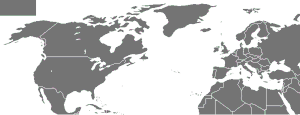
NATO (North Atlantic Treaty Organization) is an international alliance that consists of 30 member states from North America and Europe. It was established at the signing of the North Atlantic Treaty on 4 April 1949. Article Five of the treaty states that if an armed attack occurs against one of the member states, it shall be considered an attack against all members, and other members shall assist the attacked member, with armed forces if necessary.[1]
Of the 30 member countries, two are located in North America (Canada and the United States), 28 are in Europe, one of which (Turkey) is in both Europe and Asia. All members have militaries, except for Iceland, which does not have a typical army (but it does have a coast guard and a small unit of civilian specialists for NATO operations). Three of NATO's members are nuclear weapons states: France, the United Kingdom, and the United States. NATO has 12 original founding member nation states, and from 18 February 1952 to 6 May 1955, it added three more member nations, and a fourth on 30 May 1982. After the end of the Cold War, NATO added 14 more member nations (10 former Warsaw Pact members and four former Yugoslav republics) from 12 March 1999 to 27 March 2020.
Founding and changes in membership[]
NATO has added new members eight times since its foundation, in 1949, with a current total of 30 members. Twelve countries took part in the founding of NATO: Belgium, Canada, Denmark, France, Iceland, Italy, Luxembourg, the Netherlands, Norway, Portugal, the United Kingdom, and the United States. In 1952, Greece and Turkey became members of the Alliance, joined later by West Germany (in 1955) and Spain (in 1982). In 1990, with the reunification of Germany, NATO grew to include the former country of East Germany. Between 1994 and 1997, wider forums for regional cooperation between NATO and its neighbours were set up, including the Partnership for Peace, the Mediterranean Dialogue initiative and the Euro-Atlantic Partnership Council. In 1997, three former Warsaw Pact countries, Hungary, the Czech Republic, and Poland, were invited to join NATO. After this fourth enlargement in 1999, the Vilnius group of the Baltics and seven East European countries formed in May 2000 to cooperate and lobby for further NATO membership. Seven of these countries joined in the fifth enlargement in 2004. The Adriatic States Albania and Croatia joined in the sixth enlargement in 2009, Montenegro in 2017 and North Macedonia in 2020.
Member countries[]
| Flag | Map | Member state | Capital | Accession[2] | Population[a] | Area[4] |
|---|---|---|---|---|---|---|
 |
Albania | Tirana | 1 April 2009 | 3,088,385 | 28,748 km2 (11,100 sq mi) | |
 |
Belgium | Brussels | 24 August 1949[b] | 11,778,842 | 30,528 km2 (11,787 sq mi) | |
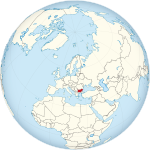 |
Bulgaria | Sofia | 29 March 2004 | 6,919,180 | 110,879 km2 (42,811 sq mi) | |
 |
Canada | Ottawa | 24 August 1949[b] | 37,943,231 | 9,984,670 km2 (3,855,103 sq mi) | |
 |
Croatia | Zagreb | 1 April 2009 | 4,208,973 | 56,594 km2 (21,851 sq mi) | |
 |
Czechia as the Czech Republic |
Prague | 12 March 1999 | 10,702,596 | 78,867 km2 (30,451 sq mi) | |
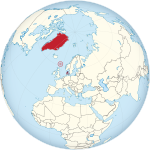 |
Denmark | Copenhagen | 24 August 1949[b] | 5,894,687 | 42,943 km2 (16,580 sq mi)[5] | |
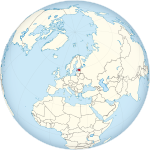 |
Estonia | Tallinn | 29 March 2004 | 1,220,042 | 45,228 km2 (17,463 sq mi) | |
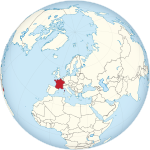 |
France | Paris | 24 August 1949[b] | 68,084,217 | 643,427 km2 (248,429 sq mi) | |
 |
Germany[c] | Berlin | 8 May 1955 | 79,903,481 | 357,022 km2 (137,847 sq mi) | |
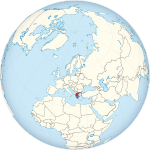 |
Greece | Athens | 18 February 1952 | 10,569,703 | 131,957 km2 (50,949 sq mi) | |
 |
Hungary | Budapest | 12 March 1999 | 9,728,337 | 93,028 km2 (35,918 sq mi) | |
 |
Iceland | Reykjavík | 24 August 1949[b] | 354,234 | 103,000 km2 (39,769 sq mi) | |
 |
Italy | Rome | 24 August 1949[b] | 62,390,364 | 301,340 km2 (116,348 sq mi) | |
 |
Latvia | Riga | 29 March 2004 | 1,862,687 | 64,589 km2 (24,938 sq mi) | |
 |
Lithuania | Vilnius | 29 March 2004 | 2,711,566 | 65,300 km2 (25,212 sq mi) | |
 |
Luxembourg | Luxembourg | 24 August 1949[b] | 639,589 | 2,586 km2 (998 sq mi) | |
 |
Montenegro | Podgorica | 5 June 2017 | 607,414 | 13,812 km2 (5,333 sq mi) | |
 |
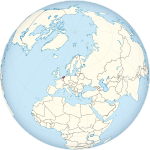 |
Netherlands | Amsterdam | 24 August 1949[b] | 17,337,403 | 41,543 km2 (16,040 sq mi) |
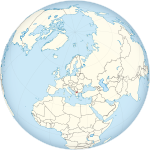 |
North Macedonia | Skopje | 27 March 2020 | 2,128,262[d] | 25,713 km2 (9,928 sq mi) | |
 |
Norway | Oslo | 24 August 1949[b] | 5,509,591 | 323,802 km2 (125,021 sq mi) | |
 |
Poland | Warsaw | 12 March 1999 | 38,185,913 | 312,685 km2 (120,728 sq mi) | |
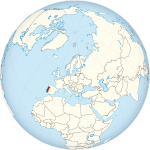 |
Portugal | Lisbon | 24 August 1949[b] | 10,263,850 | 92,090 km2 (35,556 sq mi) | |
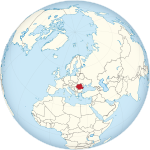 |
Romania | Bucharest | 29 March 2004 | 21,230,362 | 238,391 km2 (92,043 sq mi) | |
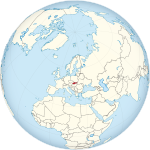 |
Slovakia | Bratislava | 29 March 2004 | 5,436,066 | 49,035 km2 (18,933 sq mi) | |
 |
Slovenia | Ljubljana | 29 March 2004 | 2,102,106 | 20,273 km2 (7,827 sq mi) | |
 |
Spain | Madrid | 30 May 1982 | 47,260,584 | 505,370 km2 (195,124 sq mi) | |
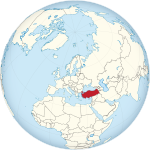 |
Turkey | Ankara | 18 February 1952 | 82,482,383 | 783,562 km2 (302,535 sq mi) | |
 |
United Kingdom | London | 24 August 1949[b] | 67,081,000 | 243,610 km2 (94,058 sq mi) | |
 |
United States | Washington, D.C. | 24 August 1949[b] | 334,998,398 | 9,833,520 km2 (3,796,743 sq mi) |
Military personnel[]
The following list is sourced from the 2018 edition of "The Military Balance" published annually by the International Institute for Strategic Studies.
| Country | Active military | Reserve military | Paramilitary | Total | Per 1,000 capita (total) |
Per 1,000 capita (active) | |
|---|---|---|---|---|---|---|---|
| Albania[7] | 10,000 | 0 | 500 | 10,500 | 3.4 | 3.3 | |
| Belgium[8] | 28,800 | 5,000 | 0 | 33,800 | 2.9 | 2.5 | |
| Bulgaria[9] | 31,300 | 3,000 | 0 | 34,300 | 4.8 | 4.4 | |
| Canada[10] | 67,490 | 36,300 | 4,500 | 108,290 | 2.8 | 1.8 | |
| Croatia[11] | 15,650 | 0 | 3,000 | 18,650 | 4.3 | 3.6 | |
| Czechia[12] | 23,200 | 2,359 | 0 | 25,559 | 2.4 | 2.2 | |
| Denmark[13] | 16,100 | 45,700 | 0 | 61,800 | 11 | 2.9 | |
| Estonia[14] | 6,600 | 12,000 | 15,800 | 34,400 | 27.5 | 5.3 | |
| France[15] | 202,700 | 72,300 | 103,400 | 378,400 | 5.6 | 3 | |
| Germany[16] | 178,600 | 27,900 | 500 | 207,000 | 2.5 | 2.1 | |
| Greece[17] | 141,350 | 220,500 | 4,000 | 365,850 | 34.1 | 13.2 | |
| Hungary[18] | 27,800 | 44,000 | 12,000 | 83,800 | 8.5 | 2.8 | |
| Iceland[19] | 200 | 200 | 250 | 650 | 1.9 | 0.6 | |
| Italy[20][e] | 174,500 | 18,300 | 182,350 | 375,150 | 6.2 | 2.9 | |
| Latvia[21] | 5,310 | 7,850 | 0 | 13,160 | 6.8 | 2.7 | |
| Lithuania[22] | 20,521 | 90,000 | 14,400 | 124,921 | 44.2 | 7.3 | |
| Luxembourg[23] | 900 | 0 | 600 | 1,500 | 2.5 | 1.5 | |
| Montenegro[24] | 1,950 | 0 | 10,100 | 12,050 | 18.8 | 3 | |
| Netherlands[25] | 35,410 | 4,660 | 5,900 | 45,970 | 2.6 | 2 | |
| North Macedonia[26] | 8,000 | 4,850 | 7,600 | 20,450 | 9.7 | 3.8 | |
| Norway[27] | 23,950 | 38,590 | 0 | 62,540 | 11.8 | 4.5 | |
| Poland[28] | 105,000 | 0 | 73,400 | 178,400 | 4.6 | 2.7 | |
| Portugal[29] | 30,500 | 211,950 | 44,000 | 286,450 | 27.7 | 2.9 | |
| Romania[30] | 69,300 | 50,000 | 79,900 | 199,200 | 9.3 | 3.2 | |
| Slovakia[31] | 15,850 | 0 | 0 | 15,850 | 2.9 | 2.9 | |
| Slovenia[32] | 7,250 | 1,760 | 5,950 | 14,960 | 7.6 | 3.7 | |
| Spain[33] | 121,200 | 15,450 | 76,750 | 213,400 | 4.5 | 2.6 | |
| Turkey[34] | 355,200 | 378,700 | 156,800 | 890,700 | 10.7 | 4.2 | |
| United Kingdom[35] | 146,650 | 44,250 | 0 | 190,900 | 2.8 | 2.2 | |
| United States[36] | 1,348,400 | 857,950 | 0 | 2,206,350 | 6.8 | 4.2 |
Military expenditures[]
The United States has a larger defence expenditure than all other members combined.[37] Criticism of the organization by US president Donald Trump caused various reactions from American and European political figures, ranging from ridicule to panic.[38][39][40] Pew Research Center's 2016 survey among its member states showed that while most countries viewed NATO positively, most NATO members preferred keeping their military spending the same. The response to whether their country should militarily aid another NATO country if it were to get into a serious military conflict with Russia was also mixed. Only in the US and Canada did more than 50% of the people answer that they should.[41][42]
| Member state | Population[a] | GDP (nominal)[f] | Defence expenditure (US$)[g] | Personnel[g] | ||
|---|---|---|---|---|---|---|
| In millions | % real GDP | Per capita | ||||
| 3,074,579 | 16.75 | 198 | 1.26 | 58 | 6,800 | |
| 11,720,716 | 529.55 | 4,921 | 0.93 | 392 | 26,000 | |
| 6,966,899 | 70.13 | 1,079 | 1.61 | 132 | 25,000 | |
| 38,436,447 | 2,016.00 | 21,885 | 1.27 | 569 | 72,000 | |
| 4,227,746 | 63.17 | 1,072 | 1.75 | 238 | 15,000 | |
| 10,702,498 | 261.73 | 2,969 | 1.19 | 236 | 26,000 | |
| 5,869,410 | 360.51 | 4,760 | 1.35 | 760 | 17,000 | |
| 1,228,624 | 32.74 | 669 | 2.13 | 429 | 6,300 | |
| 67,413,000 | 2,938.00 | 50,659 | 1.84 | 709 | 208,000 | |
| 83,190,556 | 4,319.00 | 54,113 | 1.36 | 591 | 184,000 | |
| 10,718,565 | 211.64 | 4,844 | 2.24 | 431 | 105,000 | |
| 9,771,827 | 180.50 | 2,080 | 1.21 | 178 | 20,000 | |
| 350,734 | 24.24 | N/A | N/A | N/A | N/A | |
| 60,317,116 | 2,106.00 | 24,482 | 1.22 | 385 | 179,000 | |
| 1,881,232 | 36.77 | 724 | 2.01 | 325 | 6,400 | |
| 2,731,464 | 56.23 | 1,084 | 2.13 | 336 | 20,521 | |
| 628,381 | 72.99 | 391 | 0.55 | 552 | 900 | |
| 609,859 | 5.69 | 92 | 1.65 | 126 | 1,600 | |
| 17,674,000 | 1,012.99 | 12,419 | 1.35 | 655 | 41,000 | |
| 2,125,971 | 13.33 | 108 | 1.09 | 51 | 7,200 | |
| 5,467,439 | 422.06 | 7,179 | 1.70 | 1,308 | 20,000 | |
| 38,282,325 | 606.73 | 11,971 | 2.01 | 296 | 123,000 | |
| 10,344,802 | 251.70 | 3,358 | 1.41 | 299 | 30,000 | |
| 21,302,893 | 261.87 | 5,043 | 2.04 | 225 | 69,000 | |
| 5,440,602 | 111.87 | 1,905 | 1.74 | 322 | 13,000 | |
| 2,102,678 | 56.85 | 581 | 1.04 | 253 | 6,800 | |
| 47,450,795 | 1,450.00 | 13,156 | 0.92 | 264 | 121,000 | |
| 83,614,362 | 794.53 | 13,919 | 1.89 | 225 | 435,000 | |
| 67,081,000 | 3,108.00 | 60,376 | 2.13 | 979 | 144,000 | |
| 332,639,102 | 22,320.00 | 730,149 | 3.42 | 2,072 | 1,338,000 | |
| 951,214,086 | 42,444.53 | 1,036,077 | 2.51 | 1,045 | 3,258,000 | |
Notes[]
- ^ a b Population data is based on a July 2021 estimate by the Central Intelligence Agency in The World Factbook.[3]
- ^ a b c d e f g h i j k l Founding member of NATO.
- ^ Germany initially joined NATO as West Germany. The former country of East Germany joined NATO after German reunification.
- ^ North Macedonia's population estimate was missing from Central Intelligence Agency's Country Comparison list in The World Factbook but available in the country's entry.[6]
- ^ The paramilitary forces of Italy consist of the Carabinieri and the Guardia di Finanza.
- ^ Gross domestic product (nominal) data (in billions of US dollars) is based on an October 2019 issue of the World Economic Outlook, which is published by the International Monetary Fund.[43]
- ^ a b Defence expenditure and personnel data are based on a June 2019 press release from NATO.[44]
References[]
- Citations
- ^ "The North Atlantic Treaty". North Atlantic Treaty Organization. 4 April 1949. Retrieved 16 June 2008.
- ^ "Member countries". NATO. 24 March 2020. Archived from the original on 29 March 2020. Retrieved 29 March 2020.
- ^ "Country Comparisons — Population". Central Intelligence Agency. Retrieved 1 January 2022.
- ^ "Field Listing :: Area". Central Intelligence Agency. Retrieved 3 March 2011.
- ^ "AREA". Statistics Denmark. Retrieved 29 January 2022.
- ^ "North Macedonia — People and Society". Central Intelligence Agency. Retrieved 1 January 2022.
- ^ IISS 2018, pp. 82
- ^ IISS 2018, pp. 85
- ^ IISS 2018, pp. 88
- ^ IISS 2018, pp. 43
- ^ IISS 2018, pp. 90
- ^ IISS 2018, pp. 94
- ^ IISS 2018, pp. 96
- ^ IISS 2018, pp. 98
- ^ IISS 2018, pp. 102
- ^ IISS 2018, pp. 107-108
- ^ IISS 2018, pp. 111
- ^ IISS 2018, pp. 114
- ^ IISS 2018, p. 116
- ^ IISS 2018, pp. 118
- ^ IISS 2018, pp. 122
- ^ IISS 2018, pp. 124
- ^ IISS 2018, p. 125-126
- ^ IISS 2018, pp. 128
- ^ IISS 2018, pp. 130
- ^ IISS 2018, pp. 126
- ^ IISS 2018, pp. 132-133
- ^ IISS 2018, pp. 135
- ^ IISS 2018, pp. 138
- ^ IISS 2018, pp. 140
- ^ IISS 2018, pp. 145
- ^ IISS 2018, pp. 147
- ^ IISS 2018, pp. 148
- ^ IISS 2018, pp. 156-157
- ^ IISS 2018, pp. 160-161
- ^ IISS 2018, pp. 46
- ^ Where Does The Relationship Between NATO And The U.S. Go From Here?, Huffington Post
- ^ NATO allies boost defense spending in the wake of Trump criticism, The Washington Post
- ^ Former US ambassador to Nato in withering criticism of Donald Trump, The Independent
- ^ Shaken by Trump’s Criticism of NATO, Europe Mulls Building Own Military Force, Voice Of America
- ^ Support for NATO is widespread among member nations, Pew Research
- ^ U.S. would defend NATO despite Trump's criticism, Europeans believe: study, Reuters
- ^ "GDP, current prices". International Monetary Fund. Retrieved 29 March 2020.
- ^ "Defence Expenditure of NATO Countries (2012-2019)" (PDF). NATO. 25 June 2019. Retrieved 30 March 2020.
- Bibliography
- International Institute for Strategic Studies (14 February 2018). The Military Balance 2018. London: Routledge. ISBN 9781857439557.
- Member states of NATO
- NATO
- Countries by international organization




























